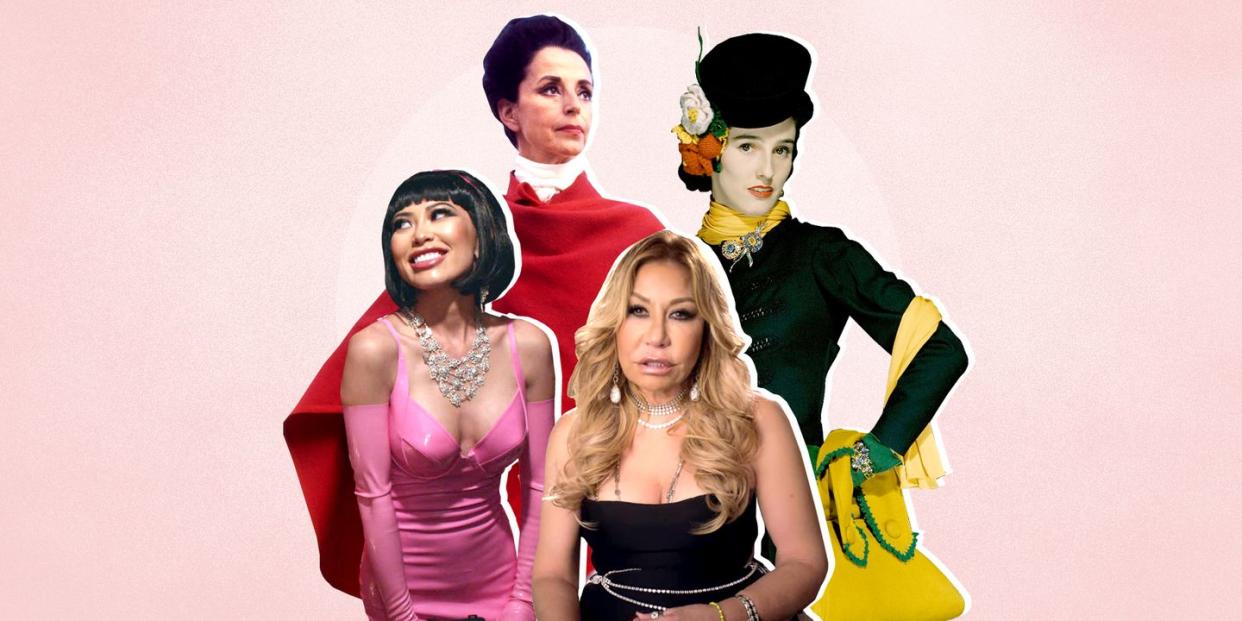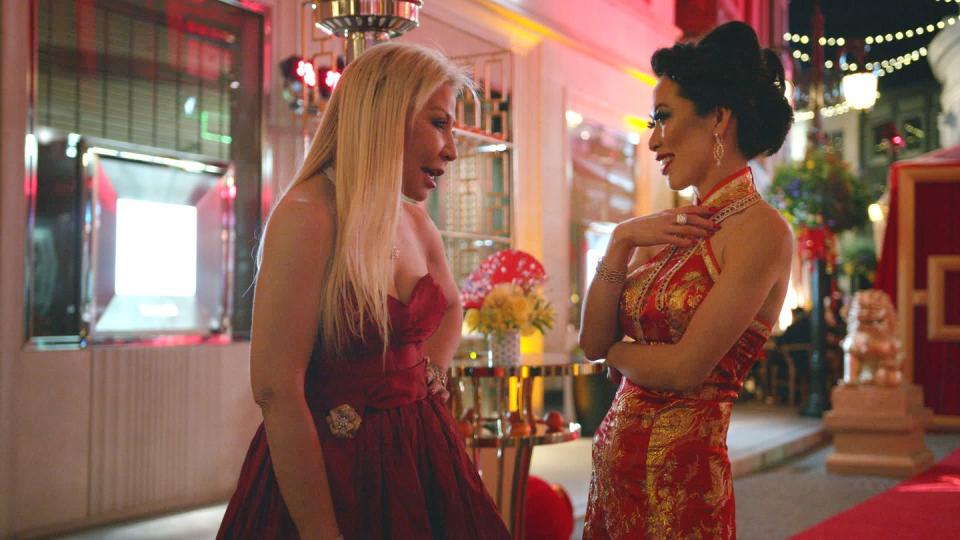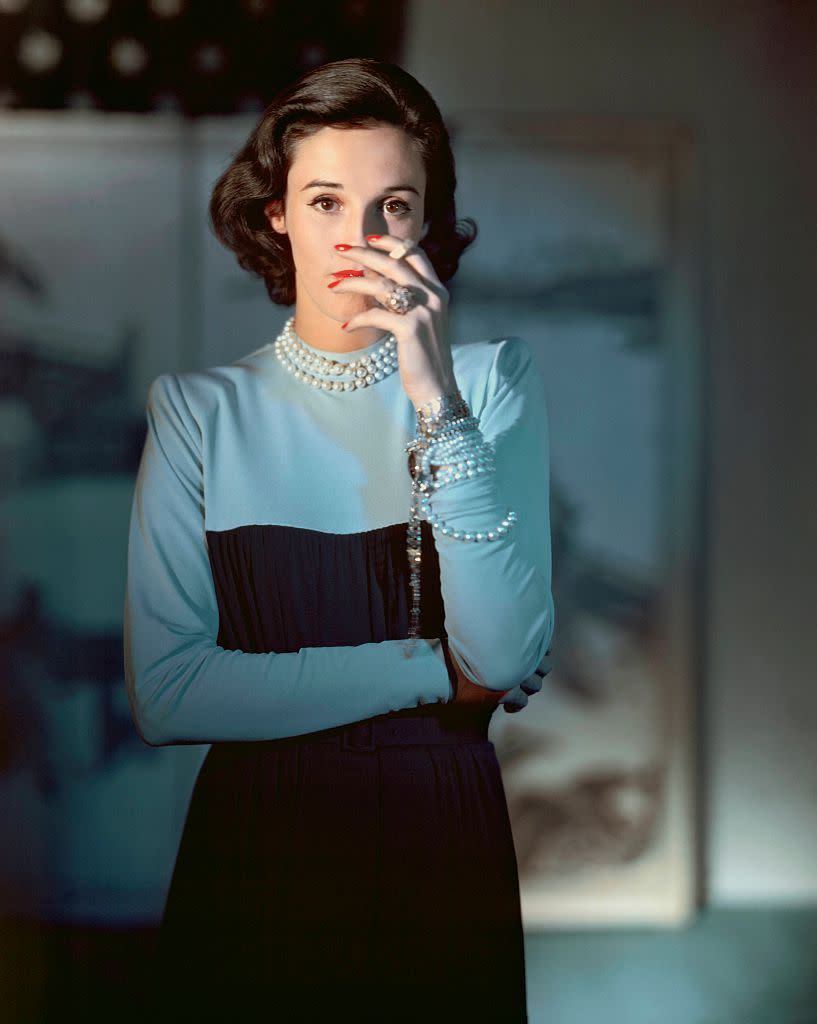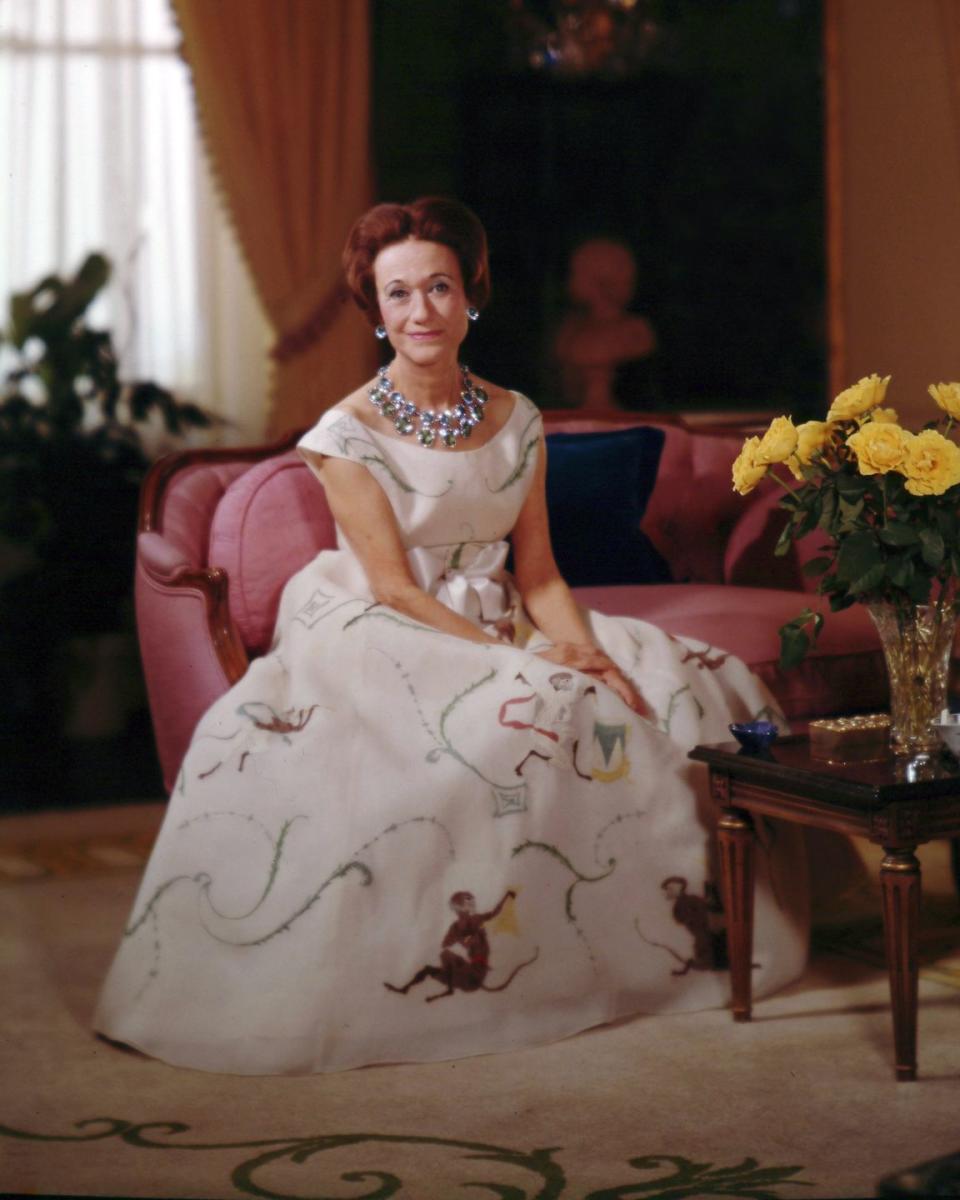Anna Shay and Christine Chiu Aren't the First Elites to Have a Jewelry Feud

“Don’t outshine me, bitch.”
Isn’t that how all really good cocktail party conversations begin? The shot is heard in the opening montage of the premiere episode of Bling Empire, Netflix’s reality series chronicling the lives and spending of a small circle of Los Angeles-based, Asian American friends and enemies. The title of the episode foreshadows the central conflict at the heart of it. It is called “Neklacegate 90210.” It is jewelry. And it is war.
The artillery in this case is a Louis Vuitton High Jewelry diamond-and-pink-sapphire necklace, though it’s more like a collar, and big enough to be called a bib. Christine Chiu arrives at the home of rival Anna Shay in her own one-of-a-kind diamond necklace—a piece of high jewelry. What does the term mean, exactly? Let Christine tell it: “In the world of high jewelry, not everyone is invited. You have to really earn your way there. Unfortunately for Anna, she needs to realize she’s not the only one in the game anymore.” Diamonds as the great equalizer? Maybe.
But as it turns out, Anna has a similar necklace (High Jewelry pieces are all handcrafted so no two are exactly alike) and interprets Christine’s jewelry choice as a declaration of jewelry one-upmanship. And to be clear, that is exactly what it was: “I think Anna has something similar maybe I’ll wear it to her dinner party,” Christine says while choosing her wardrobe. The other guests immediately recognize a battle brewing: “I saw the necklace and thought right away, DRAMA.” Anna detects the affront immediately and deploys her troops to switch Christine’s place at dinner, forcing her to retreat to social Siberia. Her strategy: “I have the same diamond necklace… Is she trying to make a point? ...I find it fiercely annoying …Fuck with me, sit there.”

The battle rages on after the party with a war of words, as the duo debate which French jewelry brand has the longest history: Mellerio says Christine; Boucheron says Anna. Jewelry knowledge, too, is social power. (They are both in this case, sort of right. Mellerio is technically the oldest but Boucheron is not far behind and was also the first jeweler in the Place Vendome.) Now, you might ask, after watching "Necklacegate," and then binging the entire series, do people really use diamonds to play with others' emotions? Can stones be wielded like a sword in a diamond duel? How many Necklacegates have come before this?
The power of jewelry to signify and cement status is well-documented in the ancient laws that sought to legislate its ownership. There is in fact a jewelry clause in the Justinian Code written in 529 A.D.: sapphires, emeralds, and pearls, were for the Emperor only, but every man had the right to wear a gold ring. Sumptuary laws outlining rules of adornment were in the books long after. But the unwritten decrees are the ones we are dissecting here, and the ones that people—then, now, always—have the most fun playing with.
“There is a story about Babe Paley and Gloria Guinness,” Sotheby's head of jewelry Frank Everett tells me conspiratorially. "When the Paleys came aboard the Guinness yacht for a summer visit, Gloria specifically told Babe not to bring any fancy dresses or jewelry, that the trip was to be low-key and relaxed. Babe did as she was told, only to find that they’d been invited to a formal dinner offshore, where Gloria arrived completely decked out in fabulous jewels. She was NOT to be outdone. The next year, Babe made sure to bring her own jewels, just in case. Gloria took one look at her collection and said: ‘Really, Darling, why all the jewelry? We’re just on a boat!’ And of course, there were NO formal dinners that year."

Oh, the jewelry games some people play. Rebecca Selva, the Creative Director at Fred Leighton, calls these moments "Jewelry Zingers," and one of her favorites features two women with legendary jewelry collections, Sita Devi Maharaní of Baroda and the Duchess of Windsor. “The magnificent VCA emerald drop necklace the Duchess wears to an event in the early 1950’s and which is much admired sets the stage,” whispers Selva. “Sita Devi recognizes the drops from a diamond and emerald drop necklace which she had sold. Not to be upped by La Duchesse, Sita Devi remarks that the emeralds were lovelier when she wore them at her feet, clearly suggesting that the drops came from ankle bracelets and were only worthy to be worn at her feet... Flaming Zing!!! The Duchess of Windsor returned the necklace.”
Sometimes the zing is delivered with a slight delay, as was the case in 1884 when le tout monde of society woke up to a New York Times article declaring the greatness of Marie Louise Mackay's collection. “Oh this is one of my favorite jewelry zings ever,” says Selva. “This article must have had Marie Louise Mackay smiling, as the NY society that did not accept her fell off its breakfast chair and read about her jewelry collection! Her husband John William Mackay, a working class Irish immigrant, was one of the partners that in 1873 struck IIA MEGA rich, discovering one of the largest silver ore bodies in Nevada—the Big Bonanza. John Mackay would become one of the wealthiest men in America. Marie Louise, a native New Yorker born in Brooklyn—her father was an Army captain—moved back to New York where she tied to settle in, but was snubbed by high society despite her wealth. So her husband bought a mansion for her in Paris. She was one of Boucheron’s most important clients (her collection is featured in the Secret Archives of Boucheron) and became one the grand hostesses of Parisian grandes fêtes.” ZING.

Jewelry revenge can also be, of course, as Bling Empire fans are well aware, the inspiration for grand performance. “Oh, the great Parisian coquettes of the 19th century were famous for this kind of thing,” jeweler and author of Once Upon a Diamond, Prince Dimitri of Yugoslavia, says, “It was at a party in Maxim’s in Paris. La Belle Othero was wearing everything she had. Liane de Pougy had heard she would do that and came all in black wearing nothing, but was followed by her two chamber maids wearing all her jewelry.” A statement was made, a battle begun, a zing straight to the heart—right where a pearl brooch might be.
You Might Also Like

